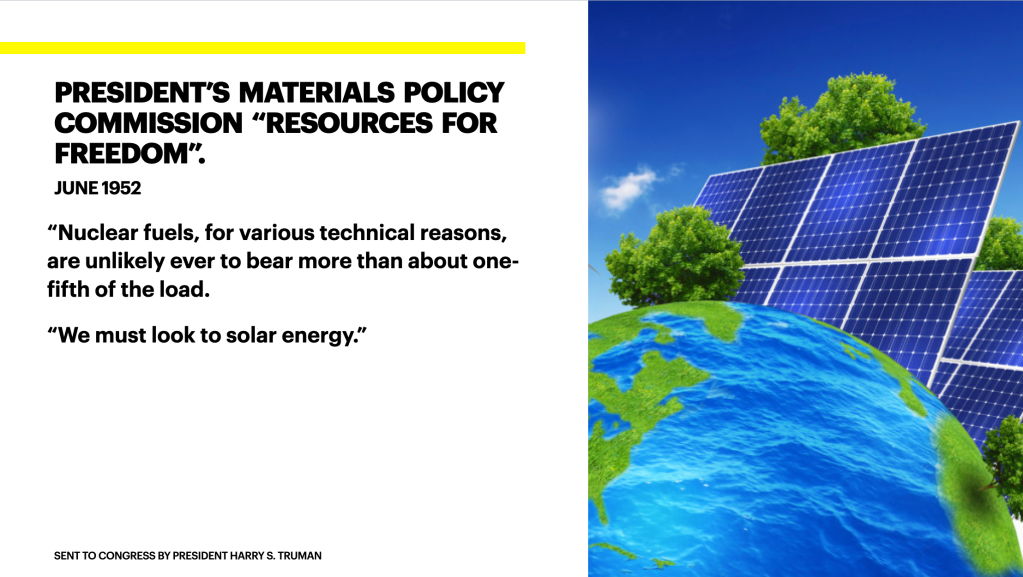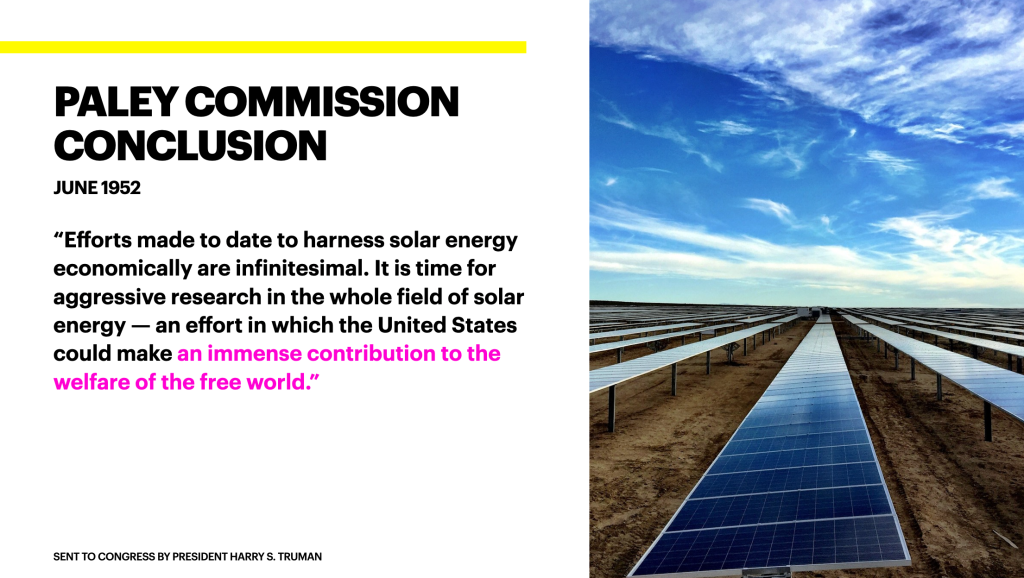Nuclear power has long stifled renewables. Now it needs to go extinct
By Linda Pentz Gunter
We needn’t have had Fukushima at all, now 12 years old and still emitting radiation, still not “cleaned up”, still responsible for forbidden zones where no one can live, play, work, grow crops. We needn’t have had Chornobyl either, or Three Mile Island, or Church Rock. We needn’t have almost lost Detroit.
We could have avoided climate change as well. Not just by responding promptly to the early recognition of the damage fossil fuels were doing. But also by heeding one sensible plan that, if it had been acted upon, would have removed the nuclear power elephant from the energy solutions room and possibly also saved us from plunging into the climate catastrophe abyss in which we now find ourselves.
Right from the beginning, nuclear power made a significant contribution to the climate crisis we now face.
And unfortunately, as is often the case, the United States played the starring role.

Nuclear power was never the answer to climate change and it’s only pretending to be now as a desperate, last-ditch survival tactic. Renewables were always the answer and we’ve known this for decades.
Since the 1950s, nuclear power has been on the table for one reason only and it has nothing to do with reducing carbon footprints or sound science or strong economics.
What the nuclear power choice has always been about is the misguided caché given to nuclear weapons, to which nuclear power is inextricably linked. That caché prevented an early, rapid and widespread implementation of renewable energy. And that, in turn, has resulted in the climate crisis we have now.
There is growing recognition and acceptance of the role fossil fuels have played in our downfall and the imperative to eliminate their use. But there is little to no recognition of the impediment nuclear power has always been —and continues to be —when it comes to prioritizing renewable energy, along with energy efficiency and conservation.
Studies today clearly show that the choice of nuclear power over renewable energy impedes progress on carbon reductions, and of course costs far more. But nuclear power was always in the way. Arguably, nuclear power is far more a contributor to climate change than it could ever be a solution to it. How can that be so? Surely, using nuclear power all these years has spared us carbon emissions?
That would be true if the competition had been between nuclear and coal or nuclear and gas. But when nuclear power got started in the US, it was part of a very different agenda and what it supplanted was solar energy.
On July 2, 1952, President Harry Truman sent a report to Congress that had been completed a month earlier. It was called the President’s Materials Policy Commission “Resources for Freedom”. The Commission was chaired by William S. Paley, so it is commonly referred to as the Paley Commission.
Chapter 15 was entitled “The Possibilities of Solar Energy”. It went through many technical and economic scenarios, showing great potential and also flagging some stumbling blocks, most of which have since been solved. Here is what it concluded. In 1952.
“If we are to avoid the risk of seriously increased real unit costs of energy in the United States, then new low-cost sources should be made ready to pick up some of the load by 1975.”
Even at that early date, the Paley Commission’s authors recognized the abundance offered by solar energy, observing that, “the United States supply of solar energy is about 1,500 times the present requirement.”

But here is what they were not looking to for when it came to a “new low-cost source” of energy.
The Commission concluded that: “Nuclear fuels, for various technical reasons, are unlikely ever to bear more than about one-fifth of the load. We must look to solar energy.”
“We must look to solar energy.” Those words must surely give one pause.
And then the big what-might-have-been:
“Efforts made to date to harness solar energy economically are infinitesimal. It is time for aggressive research in the whole field of solar energy — an effort in which the United States could make an immense contribution to the welfare of the free world.” [my emphases]
Instead, Truman’s presidency ended in January 1953, and the next president, Dwight Eisenhower, effectively tossed the Paley Commission report in the bin. It was replaced with the now infamous Atoms for Peace. Which of course was a lie. Because it was never about atoms for peace. It was really about atoms for war.
The arguments for using nuclear power to address climate change are specious as we know. It’s too slow, too expensive, unsuited to distributed generation and the coming smart grids, as well as completely impractical for rural Third World environments. It can do nothing to reduce emissions from the transportation sector or agriculture, not to mention its show-stopping liabilities — safety, security and radioactive waste.
What nuclear power can boast is that is has slowed progress on achieving a low-carbon economy; wasted precious time on fruitless promises of a “renaissance”; stolen funds from renewable energy; and captured sectors of the energy market at our expense and for no other reason than to claim continued legitimacy.
I love elephants. We must do everything we can to save them. But the nuclear power elephant in the room really does need to go extinct in a hurry. Otherwise, that is the fate that will instead befall all of us.
Headline photo by By Aleksandr_K for Shutterstock.
This essay was derived from a January 31, 2021 talk given by the author at the Beyond Nuclear conference hosted by Helensburgh, Scotland Campaign for Nuclear Disarmament. Linda Pentz Gunter is the international specialist at Beyond Nuclear and writes for and curates Beyond Nuclear International.
 Beyond Nuclear International
Beyond Nuclear International
Pingback: The ethical dilemma of nuclear power - Sustainable Energy Group
Pingback: The ethical dilemma of nuclear power [commentary] - NB Media Co-op
Pingback: Atoms for Peace was never the plan via Beyond Nuclear International | The Atomic Age
Pingback: The solar world we might have had via Beyond Nuclear International | The Atomic Age
Pingback: Atoms for Peace was never the plan « nuclear-news
Pingback: Atoms for Peace was never the plan « Antinuclear
Pingback: Atoms for Peace was never the plan | Beyond Nuclear International
Pingback: Nuclear Power Has Long Stifled Renewables, Now It’s Time for It to Go Extinct - SHOAH
Pingback: Nuclear news – week to 2nd October « Antinuclear
Pingback: Nuclear news – week to 2nd October « nuclear-news
Pingback: The solar world we might have had « nuclear-news